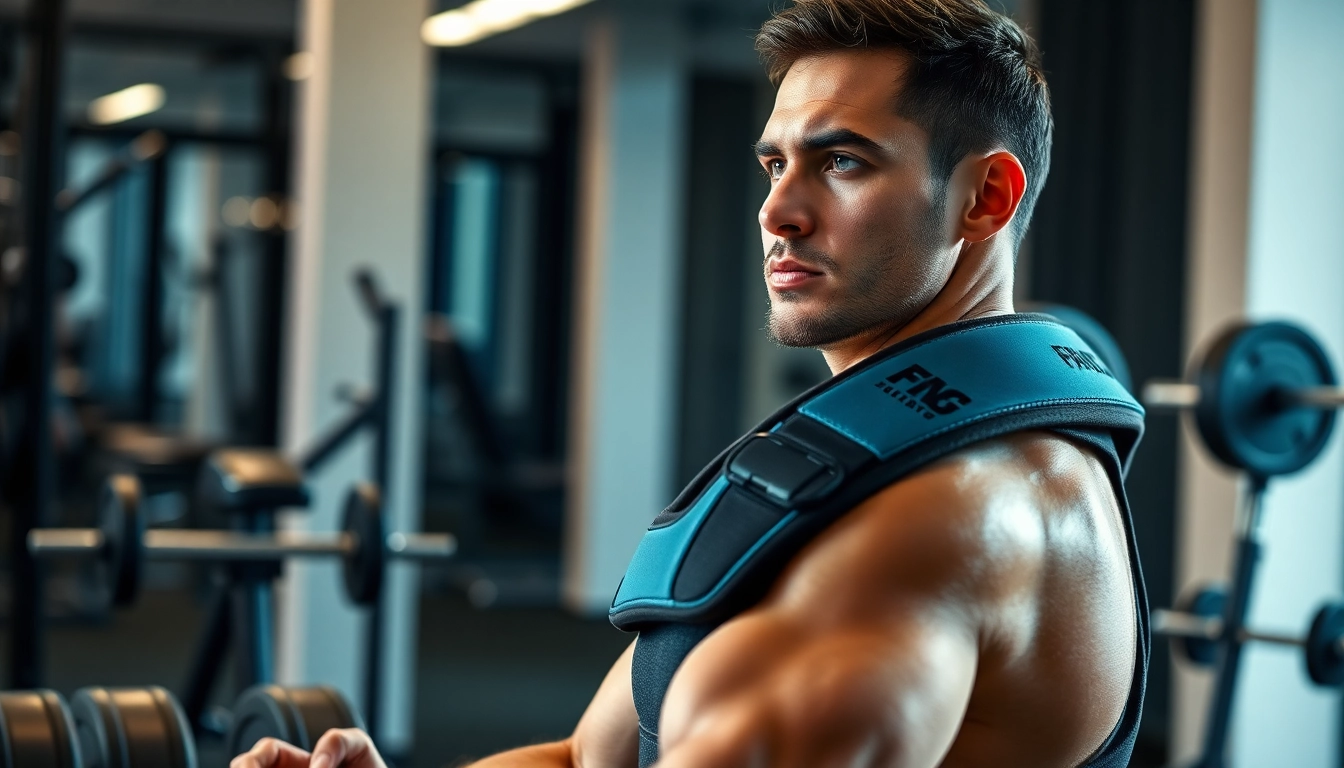Understanding the Importance of a Shoulder Brace for Weightlifting
In the world of weightlifting, shoulder injuries are a common concern for both amateur and professional athletes. The complex structure of the shoulder joint makes it susceptible to various issues, particularly when lifting heavy weights. This is where a shoulder brace for weightlifting steps in as an essential tool for both prevention and recovery. By providing stability and support, these braces enable lifters to perform at their best while mitigating the risk of injury.
What is a Shoulder Brace and How Does It Work?
A shoulder brace is designed to provide external support to the shoulder joint, which can help stabilize it during physical activities, particularly weightlifting. Most shoulder braces utilize materials that offer compression and support, which can help reduce pain and inflammation. They often feature adjustable straps to ensure a snug fit and can be worn over or under clothing, making them versatile for different training environments.
Benefits of Using a Shoulder Brace During Weightlifting
- Injury Prevention: By stabilizing the shoulder joint, braces can help prevent common injuries such as strains and tears.
- Pain Relief: Many users report a significant reduction in shoulder pain when using a brace, allowing for better focus during workouts.
- Improved Performance: With reduced risk of injury and pain, athletes can increase their lifting capacity and train more effectively.
- Enhanced Recovery: For those recovering from an injury, a shoulder brace can provide the necessary support to facilitate healing.
Common Misconceptions About Shoulder Braces
Despite their many benefits, some misconceptions about shoulder braces persist. One common belief is that wearing a brace can lead to muscle weakness. However, this is not necessarily true if the brace is used correctly and not relied upon solely for support. Instead, a well-fitted shoulder brace can support muscle function by allowing the user to train without excessive pain, thereby encouraging continued engagement of surrounding muscles.
Choosing the Right Shoulder Brace for Your Needs
Factors to Consider When Selecting a Shoulder Brace
When selecting a shoulder brace, consider the following factors to ensure it meets your specific needs:
- Type of Injury: Different braces target various conditions, such as rotator cuff tears, joint instability, or post-surgery support.
- Material: Look for breathable fabrics that offer comfort during extended wear; neoprene is a popular choice for its flexibility and support.
- Adjustability: A brace with adjustable straps can provide a customized fit, essential for effective support.
- Intended Use: Whether for weightlifting, rehabilitation, or daily use, ensure the brace aligns with your specific activities.
Comparison of Popular Shoulder Braces for Weightlifting
There are several popular shoulder braces specifically designed for weightlifting:
- Anaconda Shoulder Brace: Known for its 3D compression technology that molds to the shoulder, providing excellent support.
- McDavid Shoulder Brace: Offers adjustable compression and is ideal for those recovering from shoulder injuries.
- Bauerfeind OmoTrain: Provides support while allowing a full range of motion, making it suitable for athletes during workouts.
Tailored Recommendations Based on Individual Needs
Choosing the right brace can greatly depend on individual preferences and needs. For weightlifters focused on performance, a brace that allows for movement while still providing support may be ideal. On the other hand, those recovering from surgery might prioritize stability over mobility, opting for a more rigid design.
How to Properly Use a Shoulder Brace When Lifting Weights
Step-by-Step Guide to Putting on Your Shoulder Brace
To maximize the benefits of your shoulder brace, follow these steps:
- Start with the brace on a smooth surface — make sure it is clean and free from obstructions.
- Loosen all straps before putting it on for easier adjustment.
- Position the brace over your shoulder, ensuring it covers the joint properly.
- Secure the straps snugly, ensuring you have enough mobility but adequate support.
- Test the fit by moving your arm; adjust as necessary to ensure comfort and support.
Integrating the Brace into Your Workout Routine
To get the most out of your shoulder brace, integrate it into your routine gradually. Start with lighter weights to assess how the brace affects your performance and comfort levels. Pay attention to how your shoulder feels during and after lifting, adjusting your approach as necessary.
Common Mistakes to Avoid When Using a Shoulder Brace
While shoulder braces can be incredibly beneficial, there are some errors to avoid:
- Overreliance: Do not depend solely on the brace; continue strengthening shoulder muscles.
- Incorrect Sizing: Ensure that the brace is the right size; a poorly fitted brace can exacerbate pain.
- Neglecting Other Equipment: Remember that the brace is part of a broader toolkit, including proper lifting techniques and recovery practices.
Real-Life Success Stories: Athletes Who Benefit from Shoulder Braces
Case Study: Overcoming Shoulder Injuries with the Right Support
Consider the story of a competitive weightlifter who faced a severe rotator cuff injury. After extensive therapy and the introduction of a sturdy shoulder brace into their routine, they reported not only pain relief but also improved lifting capability. This highlights the potential of shoulder braces when used thoughtfully and strategically.
Testimonials from Weightlifting Champs Using Shoulder Braces
Many elite athletes endorse the use of shoulder braces, emphasizing how they have allowed them to continue training effectively during recovery. These testimonials often outline personal journeys, detailing the careful selection of braces tailored to their specific needs, which have led to increased confidence in their lifting abilities.
Lessons Learned from Elite Athletes and Their Gear Choices
From observing top athletes, we learn that choosing the right gear, including shoulder braces, is crucial for success in weightlifting. Many elites prioritize braces in their training regimens to ensure longevity in their physical capabilities, thereby influencing their overall performance outcomes.
The Future of Shoulder Braces in Weightlifting: Trends and Innovations for 2025
Emerging Technologies in Shoulder Brace Design
As the market for athletic support gear continues to evolve, innovations in materials and designs are on the horizon. Advanced fabrics that provide better moisture control and breathability are being developed, while designs that incorporate motion sensors for real-time feedback are becoming a reality.
Predictions for the Evolving Market of Athletic Support Gear
Experts predict that by 2025, the shoulder brace market will see a rise in personalized options tailored to individual body types and specific injuries. This could allow for a more customized approach to injury prevention and recovery in weightlifting.
How Athletes Can Benefit from Future Developments
With these advancements, athletes can expect enhanced performance, improved recovery times, and greater overall safety during their workouts. As technology merges with traditional support gear, the capacity to reduce injury risks in weightlifting will be significantly improved.



